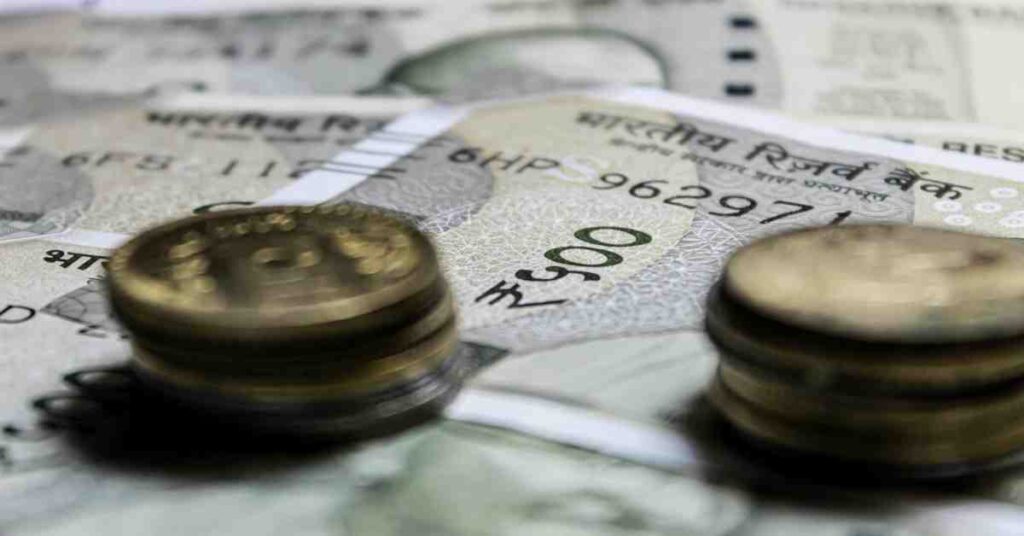The Indian Rupee has become the first currency to crash through the government’s psychological wall; it has fallen to an all-time low of 86 against the US Dollar. This plunge marks a new chapter in the economic narrative of India and raises eyebrows among investors, policymakers, and the general populace. But what could be the reason for this fall, and what is the future of this economy?
The Driving Forces Behind the Decline Rupee
Due to the rising dollar, the dollar index strengthened, resulting in a lower rupee. The dollar has moved northward with the support of strong US numbers, especially the latest jobs report. With the US economy adding suddenly 256,000 jobs last month, a far greater number than was expected, reassessment of anything regarding interest rate expectations from the Federal Reserve has come into play. With the unemployment rate now lowered to 4.1%, immediate rate cuts have been put off for even longer, giving the dollar more charm as a safe-haven currency.
But the story isn’t solely about the dollar’s strength. The domestic side of the economy sees India grappling with multiple challenges. The important factor among all has been the rise in crude oil prices due to geopolitical tensions. As a net importer of oil, the inflating costs of imports are putting additional strain on India’s current account. With rising prices of Brent crude, the oil benchmark, the country’s import bill is adversely affected, resulting in a depreciation of the Rupee.
Moreover, the rate at which Foreign Institutional Investors (FIIs) have been withdrawing their investments from Indian equities is alarming. In January 2025 alone, approximately $4.2 billion left, indicating a lose of confidence in the Indian market, amidst global economic uncertainties. Naturally, this capital flight in turn puts downward pressure on the Rupee as investors convert Rupee holdings back into Dollars.
The Role of Domestic Economic Conditions
Thus, the domestic economy of India has played a part in the falling value of the Rupee. Inflation remains a concern, with rates hovering above comfort levels, thus prompting the Reserve Bank of India (RBI) to adopt a cautious stance with regard to monetary policy. The RBI has been trying to manage growth against inflation; however, with the decline of the Rupee, this task is further complicated. A strong inflation environment with a falling GDP growth rate is bound to enhance stagflation expectations further, something investors are unlikely to applaud.
The real effective exchange rate (REER) of the Rupee, which defines its value against a basket of 40 currencies, continues to maintain its position that the Rupee has been overvalued for quite a while. This correction, analysts argue, was long needed for the sake of maintaining the export competitiveness, especially since depreciation has been common for the rest of the Asian currencies against the Dollar.
Impact on the Indian Economy
Rupee depreciation has effects beyond the small imports; inflation may be further fueled if not well handled. In this case, manufacturing will be at quite a disadvantage because nearly all raw materials are imported. The opposite applies for exporters; a weaker Rupee means Indian goods become cheaper abroad, thus increasing export volumes, if global demand does not falter.

For the average Indian, the depreciation has virtually increased the cost of foreign education, travel, and many imported goods. The cost of servicing foreign debt also rises, tightening the already-strained government finances or those of companies with huge foreign borrowings.
On the other hand, a weaker currency might attract foreign direct investment (FDI) looking for bargains in the Indian market, although the current global economic scenario may not be very appealing for potential investors.
Looking Ahead: Policy Responses and Future Projections
Allied to this, the RBI has increasingly taken measures to prop up the Rupee, such as selling dollars in the forex market to stabilize the currency. However, like all of the interventions, there are limitations to this measure. It can, really, only mean a depletion of the already dwindling foreign exchange reserves, which have slipped from their high of USD 704 billion to USD 682 billion.
The outlook is generally mixed among experts, with some predicting further depreciation – up to 88 INR/USD in the short term – due to expected monetary tightening by the United States and constant trade deficits with India. Optimists, on the other hand, are hopeful of possible policy measures. In this case, should inflation cool down, the RBI may also decide to cut rates to boost the economy, with a consequent nuanced effect on the value of the Rupee.
As a reaction to those developments, businesses, more critically import-reliant businesses, are reassessing their business strategies. Hedging against currency risk has now taken on great importance. On the other hand, the government may consider using fiscal measures to boost exports and domestic production and cut down reliance on imports.
In other words, while the Rupee going down to 86 against the Dollar is a visible indication of the stress being felt in the Indian economy, this situation also presents opportunities for growth and recalibration. These next few months will determine whether India, with its new strategies and policies, can steer itself through these turbulent economic waters, or whether the currency will continue to decline. Whatever the case is, domestic policy responses, global economic currents, and investor sentiments will unfold the next chapter of this saga in economics.




